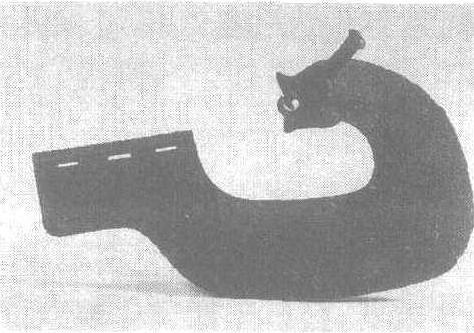龙头铜钺
西周。长28.2厘米,宽15.8厘米。上海博物馆藏。钺是一种大型的斧,盛行于商到西周时期。据《礼记·王制》:“诸侯赐弓矢,然后征,赐铁钺,然后杀。”可知钺是用于杀戮的刑具。过大过重的钺亦可为仪仗用具。王赏赐大臣的钺,又具有赋予军事权力的作用。此钺设计比较巧妙,利用钺的刃部弯曲作龙形,龙口张大作銎,可纳柲,下端有三长方形孔,可用皮条缚住柲,使之牢固。此种形制,颇为少见。

| 词条 | 龙头铜钺 |
| 类别 | 中文百科知识 |
| 释义 | 龙头铜钺西周。长28.2厘米,宽15.8厘米。上海博物馆藏。钺是一种大型的斧,盛行于商到西周时期。据《礼记·王制》:“诸侯赐弓矢,然后征,赐铁钺,然后杀。”可知钺是用于杀戮的刑具。过大过重的钺亦可为仪仗用具。王赏赐大臣的钺,又具有赋予军事权力的作用。此钺设计比较巧妙,利用钺的刃部弯曲作龙形,龙口张大作銎,可纳柲,下端有三长方形孔,可用皮条缚住柲,使之牢固。此种形制,颇为少见。
|
| 随便看 |
开放百科全书收录579518条英语、德语、日语等多语种百科知识,基本涵盖了大多数领域的百科知识,是一部内容自由、开放的电子版国际百科全书。